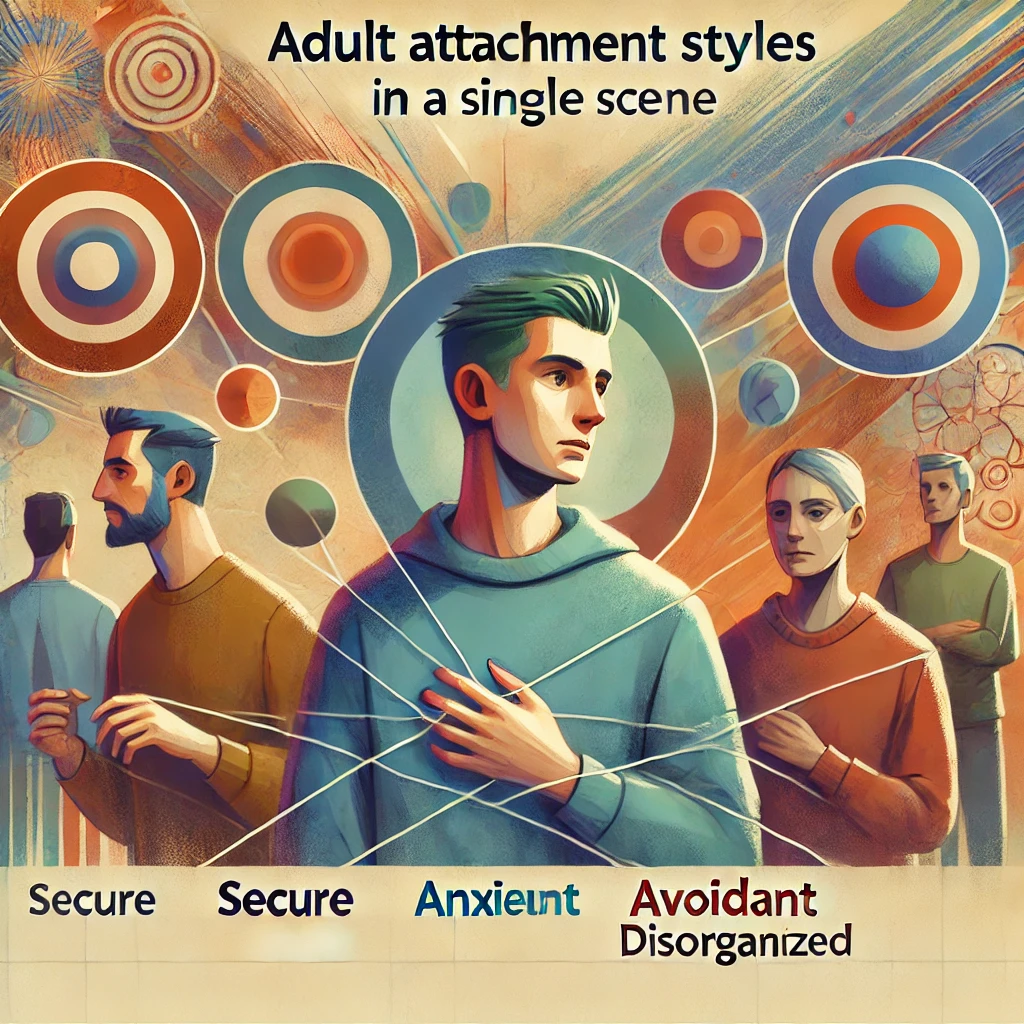Adult attachment styles significantly influence how we form and maintain relationships throughout our lives. These styles, largely shaped by our early interactions with caregivers, play a crucial role in shaping our expectations of others and our emotional responses in close relationships. Understanding your attachment style—and that of your partner—can offer valuable insights into relationship dynamics, helping to build healthier and more fulfilling connections. This 야동 article delves into adult attachment styles, their characteristics, and their impact on relationships.
The Four Main Adult Attachment Styles
1. Secure Attachment
Individuals with a secure attachment style are comfortable with intimacy and independence. They tend to have balanced relationships, characterized by trust in both themselves and their partners. This style often results from consistent and responsive caregiving during childhood.
Effect on Relationships:
Securely attached individuals typically enjoy stable and healthy relationships. They address conflicts constructively, provide support without losing their independence, and foster loyalty and trust in their partners.
2. Anxious Attachment
Anxiously attached individuals crave closeness but fear rejection and separation. They often rely heavily on their partners for validation and struggle with feelings of insecurity. This attachment style often stems from inconsistent caregiving in childhood.
Effect on Relationships:
People with anxious attachment may experience intense emotions in relationships, leading to frequent conflicts and misunderstandings. Their need for constant reassurance can strain relationships, but self-awareness and effort can help manage these anxieties for healthier connections.
3. Avoidant Attachment
Those with an avoidant attachment style value their independence and are often hesitant about emotional intimacy. They may suppress their emotional needs and distance themselves from their partners to avoid vulnerability. This style typically develops from unresponsive or dismissive caregiving.
Effect on Relationships:
Avoidantly attached individuals may struggle with commitment and emotional openness, leading to difficulties in forming deep connections. However, with effort, they can learn to build stronger emotional ties and improve their relationships.
4. Disorganized Attachment
Disorganized attachment, also known as fearful-avoidant attachment, combines elements of both anxious and avoidant styles. Individuals with this attachment style experience conflicting desires for closeness and distance, often resulting from traumatic or abusive childhood experiences.
Effect on Relationships:
Disorganized attachment leads to tumultuous relationships, characterized by trust issues and emotional instability. Therapy can help individuals with this style work through their fears and develop more secure attachment patterns.
What Attachment Styles Reveal About Your Relationships
Communication Patterns
Attachment styles heavily influence communication in relationships. Securely attached individuals tend to communicate openly and honestly, while those with anxious or avoidant styles may struggle to express their needs and emotions effectively.
Conflict Resolution
How couples handle conflict is often shaped by their attachment styles. Securely attached individuals approach conflicts as shared problems to solve, while those with anxious attachment may become overly emotional, and avoidantly attached individuals may withdraw from conflict altogether.
Intimacy and Independence
Attachment styles determine the balance between intimacy and independence in relationships. Securely attached individuals typically strike a healthy balance, while those with anxious or avoidant styles may struggle with either too much closeness or too much distance.
Trust and Commitment
Trust and commitment levels vary across attachment styles. Securely attached individuals find it easier to trust and commit, whereas those with anxious or avoidant styles may experience difficulties with trust and resistance to commitment.
Steps to Determine Your Attachment Style
Self-Reflection
Reflect on your relationship history and your reactions to closeness, conflict, and commitment. This introspection can provide insights into your attachment style.
Questionnaires and Assessments
Online questionnaires and tests can help identify your attachment style by evaluating your relational behaviors and attitudes.
Therapy and Counseling
A therapist can guide you in understanding your attachment style, exploring how early experiences influence your current relationships, and developing strategies for improvement.
Working with Your Attachment Style
Develop Self-Awareness
Understanding your attachment style is the first step toward change. Recognize your patterns and triggers to better manage your relationships.
Communicate with Your Partner
Openly discuss your attachment styles with your partner. This dialogue can help both of you work together to create a more secure and supportive relationship.
Practice Mindfulness
Mindfulness techniques can help manage the emotional responses associated with your attachment style, allowing you to stay present and calm during relational challenges.
Seek Therapy if Needed
If attachment-related struggles are significantly impacting your relationships, consider seeking professional help. A therapist can assist in resolving deep-seated issues and promoting healthier interactions.
Build Secure Attachment
Even if you don’t naturally have a secure attachment style, you can work toward it by fostering trust, engaging in honest communication, and balancing connectedness with independence.
In Summary
Understanding your adult attachment 야동 style is a powerful tool for building healthier relationships. By identifying your own style and that of your partner, you can gain valuable insights into how you both relate to each other, improving your connection and fostering deeper emotional intimacy. Whether your attachment style is secure, anxious, avoidant, or disorganized, there are strategies to help you navigate relationships more effectively and create lasting, meaningful bonds. Remember, the goal is not to change who you are, but to understand yourself better and use that knowledge to enhance your relationships.
